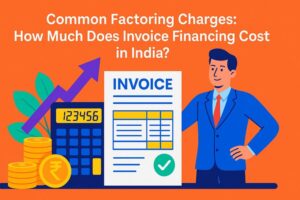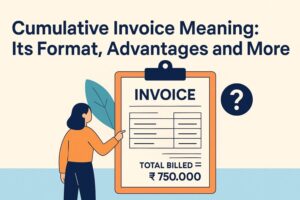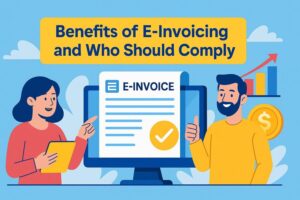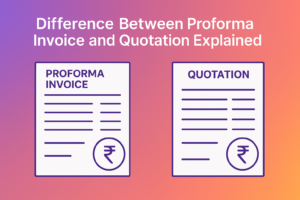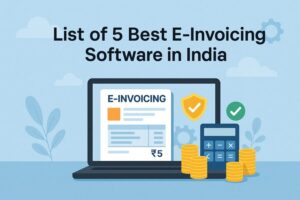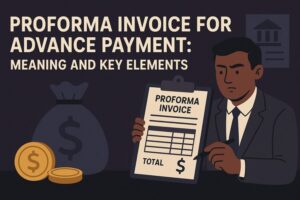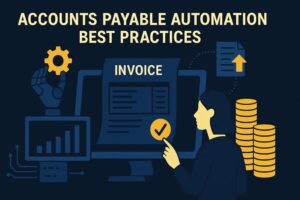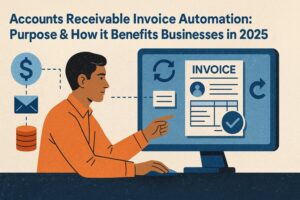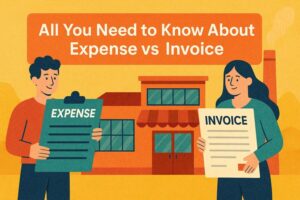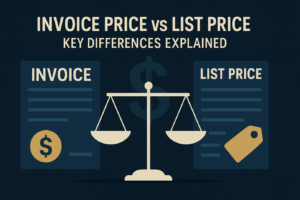Difference Between Commercial Invoice and Proforma Invoice: A Guide
- 25 Nov 25
- 8 mins
Difference Between Commercial Invoice and Proforma Invoice: A Guide
Key Takeaways
- The difference between commercial invoice and proforma invoice lies mainly in their purpose. Commercial invoices demand payment, while proformas only give estimates.
- A commercial invoice is issued after the sale is confirmed, whereas a proforma invoice is shared before finalising the purchase order.
- Commercial invoices hold legal validity, while proforma invoices are non-binding and serve as good-faith estimates.
- Commercial invoices are required for customs clearance, highlighting a major difference between commercial invoice and proforma invoice.
- Proforma invoices assist in budgeting and negotiation, while commercial invoices record actual transactions.
There are various types of invoices that business owners generate to serve different sales purposes. Well, two of these types of invoices, a pro forma invoice and a commercial invoice, play a significant role in streamlining the execution of an international or domestic sale.
Both these invoices have similar but not the same functionalities. This can be confusing for some people. Read more into this blog to know about the key difference between commercial invoice and proforma invoices and the other associated details.
Key Difference Between Commercial Invoice and Proforma Invoice
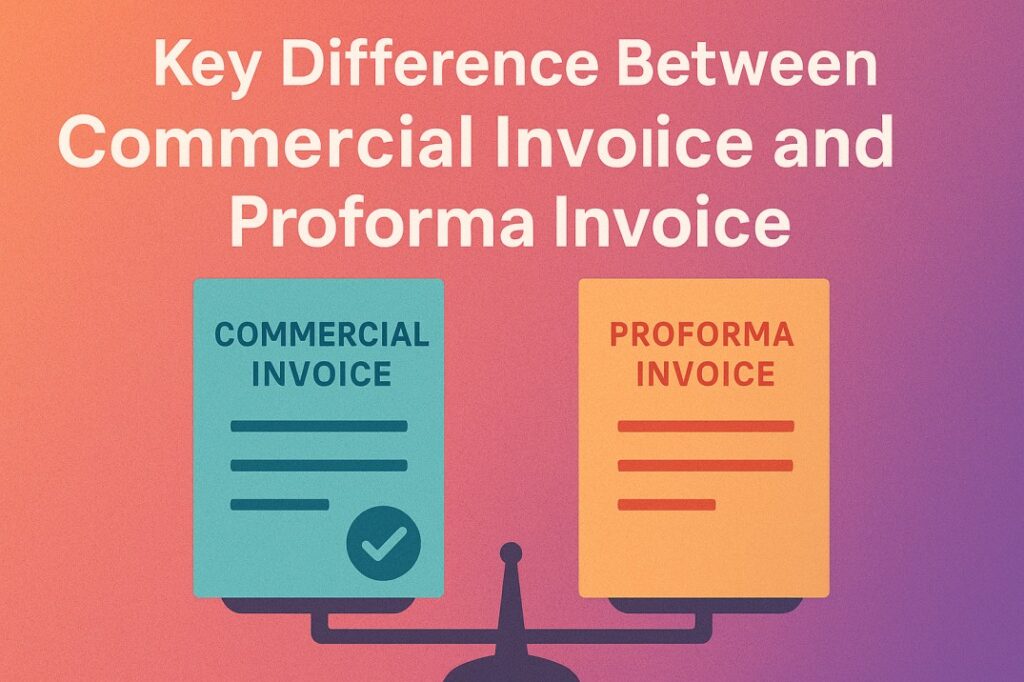
Both these documents are a form of invoice and serve the same purpose (i.e., sales). However, they have distinct features and hence are used in different ways. Here are some key differences between commercial invoice and pro forma invoice:
| Features | Commercial Invoice | Proforma Invoice |
| Issuing Time | The sales team of a business issues it when a buyer receives their delivery and payment is due for that purchase. | The sales team issues it before a final purchase order is made. However, a verbal acceptance is made. |
| Reason to Issue | This document serves as a legal document to record the transaction and request payment. | You issue this document to provide the buyer with details of the purchase before you make a final purchase order. Also helps buyers arrange financing or set up a letter of credit. |
| Details Included | A commercial invoice consists of the final details of a sales agreement and demands for final payment. | This invoice contains the price, quantity, quality, payment terms, etc. However, it does not demand for payment. |
| Legality | Commercial invoices have complete legal weight as they act as proof of a transaction. | Proforma invoices do not have any legal weight. A seller issues them to their buyers in good faith only. |
| Official Requirement | You must issue a commercial invoice after a sale, especially after a B2B sale, as this document acts as a legal pass for customs clearance. | There is no official requirement for a business to issue a proforma invoice before a sale. |
| Validity | Once a buyer receives their shipment and the sale is done, the commercial invoice becomes and remains valid. | A proforma invoice is valid until the buyer decides to make changes to the existing deal or until they go ahead with this deal. |
| Accounts | Accountants use commercial invoices as a trustworthy document to record transactions and create precise cash flows. | A proforma invoice is not used for any kind of accounting purposes. |
Now that you understand the key differences between commercial invoice and proforma invoice, let’s explore both in detail.
What Are Commercial Invoices?
A commercial invoice is a legal proof of the finalisation of a deal between a buyer and a seller. This allows both parties to mark the entry of this deal in their books of accounts. It includes comprehensive details, including buyer, seller and freight forwarder information, details of items, prices, tax rates, etc.
You will have to show this document to customs authorities to get a customs clearance to clear your freight without any hassle. You must also make sure to carry your e-way bill and make sure the details are consistent with your e-invoice or final invoice.
💡For your invoice generation needs, use the PICE App.
Details Included in a Commercial Invoice
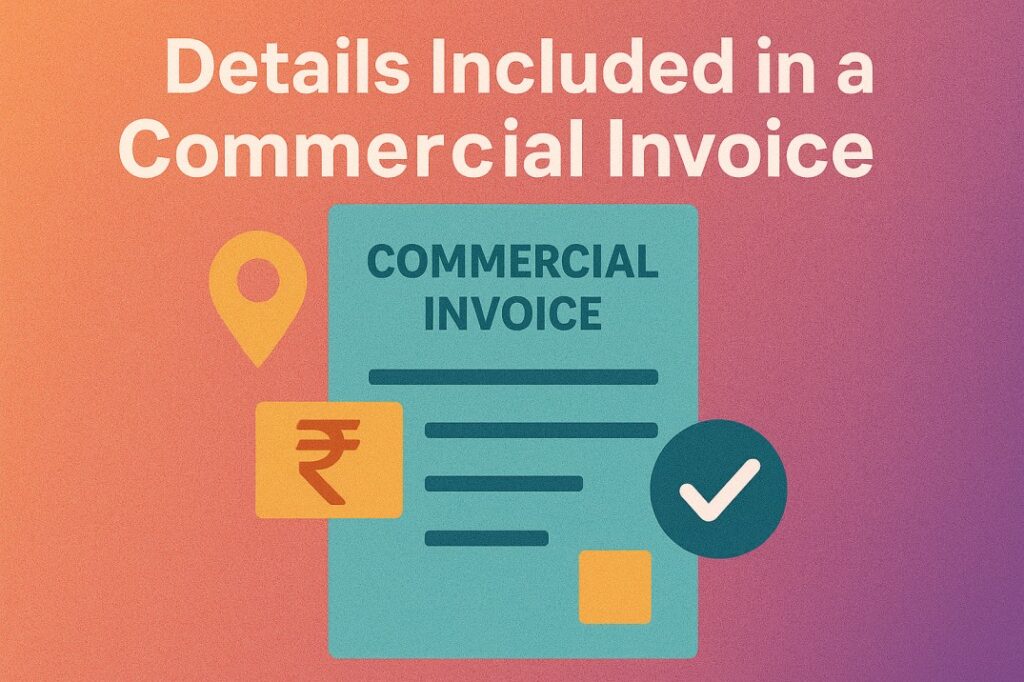
Since both these invoices serve a similar purpose, most of the details included in a commercial invoice are the same as those in a proforma invoice. However, here are some additional details in a commercial invoice which you may not find in a proforma invoice:
- Commodity Code: This is a unique product identification code that is used in the country of export. This helps to categorise the specific product that the seller has provided in their shipment.
- Origin Country: In the case of global trade, a commercial invoice will show the country from which the shipment is coming. Moreover, it also contains details of other countries where that particular product is available.
- Shipping Details: A seller must attach details of the shipment method to the commercial invoice. Details such as mode of transit, airway bills, tracking information, etc.
Note: The details sections in all kinds of invoices are governed by Section 31 of the Central Goods and Services Tax (CGST) Act, 2017. It is further specified in Rule 46 of the CGST Rules, 2017. Make sure all these details are there in your invoice to be compliant with GST laws.
When Should I Use a Commercial Invoice?
As a seller, you must create a commercial invoice as soon as the deal with your buyer is final and confirmed. Make sure you have the products in store, pack them and send them for shipment once you attach a copy of that invoice to the shipment itself.
This invoice acts as proof of sale between a seller and a buyer. It marks the initiation of the terms and conditions of their sale as soon as the buyer receives and pays for their shipment.
What Is a Proforma Invoice?
A pro forma invoice is an initial bill of sale that sellers send to buyers before officially finalising a sale deal. This is a way for you to provide necessary information to buyers about the item, price, quantity, applicable GST and final amount. However, this invoice does not demand payment.
Most businesses send this invoice in B2B sales in good faith to their customers to strengthen their acceptance of the terms of sale or to apply for import permits. This helps buyers understand what to expect with their purchase.
Once both parties confirm their agreement to the terms of a pro forma invoice, the seller goes on to generate the final invoice.
Details Included in a Proforma Invoice
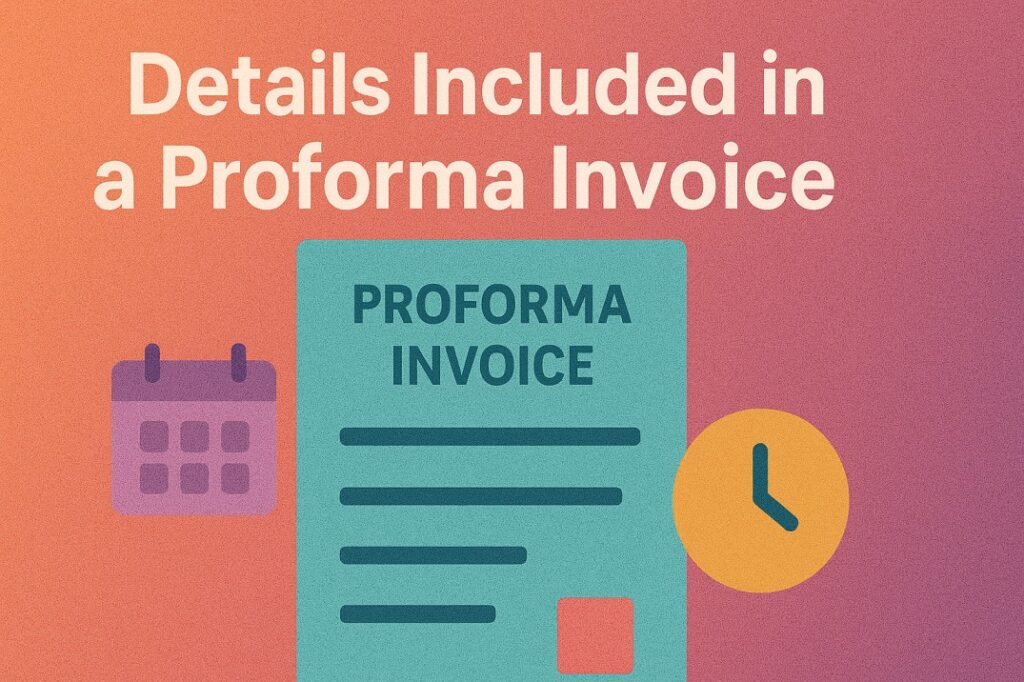
All proforma invoices might not be identical to each other. It can differ based on the type of transaction. However, here are some details you might find in general:
- Seller Details: At the top section of a pro forma invoice, you will find seller details such as business name, address, contact information, GSTIN, etc.
- Customer Details: Generally, under the seller’s information, you will find the customer’s details. This includes their business name, address, GSTIN, contact information, etc.
- Invoice Details: Invoice details include the proforma number, issue date, due date, etc.
- Particulars: This section comprises the names of the products they are buying, along with a description underneath it.
- Quantity: It is the number of pieces a buyer is purchasing. (eg, 1piece)
- Rate: This represents the selling price of an item before including taxes. (eg, ₹100 per piece)
- Taxable Amount: It is the final amount a buyer must pay for an item after adding the applicable tax rates if they accept the deal. (eg, ₹128 including GST)
- Payment Details: This refers to the bank details of the seller that a buyer must use to pay for the items. However, this invoice does not demand payment as it is not the final deal.
- Terms and Conditions: This section clarifies the terms and conditions of the business owner as a seller. For instance, 'goods once sold will not be taken back' is a condition of a seller.
What Is the Use of a Proforma Invoice?
Generally, a proforma invoice comes into use when buyers and sellers are in the negotiation stage of a sale. During this time, sellers may offer a proforma invoice to buyers every time they come into a new deal.
These invoices help buyers to get cost estimates after including taxes. Buyers can adjust their budget accordingly and read the terms and conditions of the seller regarding their deal.
A proforma invoice is a mark of good faith, especially when a new client comes to buy the product. This helps to build the initial trust among them and boosts the probability of striking their first deal.
Conclusion
Both invoices have similar details and serve to conclude a sale. However, you must understand the key differences between a commercial invoice and a proforma invoice and know which invoice you should issue and when.
Finally, we can conclude that a commercial invoice consists of more product-specific details, such as the commodity code, shipping charges, etc. However, a proforma invoice offers a gist of that trade deal.
 By
By 





